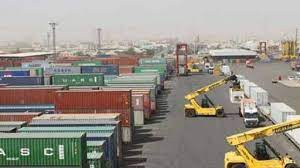Foreign
China’s cruise economy embraces rapid development

By Zhu Jinyi
On the early morning of March 5, cruise ship Adora Magic City carrying over 4,200 passengers and the MS Westerdam carrying over 2,000 passengers arrived at the Shanghai Wusongkou International Cruise Terminal, joining their peers Piano Land and Blue Dream Star.
On the first day of 2024, the Adora Magic City, China’s first domestically-built large cruise ship, set sail from Wusongkou, marking its commercial maiden voyage. Departing from Shanghai, the ship took passengers on a seven-day adventure through Jeju Island in South Korea, as well as Nagasaki and Fukuoka in Japan.
As the Chinese tourism market fully recovers, cruise vacations have gradually become popular among tourists.
The Adora Magic City can accommodate up to 5,246 passengers. It has 16 floors and over 40,000 square meters of public living and recreation space. Offering a wide range of entertainment facilities such as theaters, swimming pools, gyms, restaurants, and galleries, the ship is exactly a “floating city” on the sea.
Unlike regular passenger ships, large cruise ships are built with hotels and entertainment facilities, offering passengers diverse choices and a pleasant experience. The charm of trips on cruises, compared to other modes of transportation, lies not only in the destinations but also in the journey en route. While sailing on the sea, travelers can enjoy the comfortable environment inside the cruise ships, feel the sea breeze, and admire the sunrise and sunset at sea.
Helen Huang, president of MSC Cruises China, revealed that all cabin spaces of the company’s global cruises reserved for the Chinese market this year had been sold out, as more and more outbound travelers started considering cruise trips.
An insider said that a significant advantage of cruise trips is that they take passengers to multiple destinations in one go. From onboard activities to shore excursions, cruise trips offer tourists a richer and more diverse experience.
According to a report released by the Cruise Lines International Association, approximately 31.5 million passengers worldwide traveled by cruise in 2023, which is 106 percent of the 2019 figure.
It is believed that when the per capita GDP of a country or region reaches $6,000 to $8,000, the cruise economy will develop rapidly. Since 2012, China’s per capita GDP has entered this range.
Facts are also indicating this point. As early as 2006, the Italian cruise ship MS Costa Allegra became the first one to enter the Chinese market and received 18,000 Chinese tourists in over six months.
Statistics show that by the end of 2019, China had become the world’s second-largest cruise market after the United States. It is estimated that by 2035, China will become one of the most dynamic cruise markets globally, with an annual cruise passenger traffic reaching 14 million.
With the deliveries and operation of domestically produced large cruise ships, the supply of cruise tourism capacity has become more abundant. As more and more tourists choose to travel by cruise ship, new demands are constantly emerging.
From onboard activities to shore excursions, tourists expect more ample time for visiting and a deeper experience of local cultures at destinations, Huang said. In addition, the proportion of young tourists is increasing, and they have higher requirements for accommodation, dining, and entertainment facilities.
Cruise tourism has also attracted many inbound tourists. Recently, the MS Europa cruise ship arrived in Tianjin, bringing over 300 German tourists to visit attractions such as the Forbidden City, the Temple of Heaven, and Yonghe Lama Temple in Beijing and Tianjin. Some of them also visited the Huangyaguan section of the Great Wall and lived in local B&B hotels.
It is reported that this was the first inbound international cruise ship carrying overseas tourists to Tianjin since the city resumed cruise tourism in 2023.
This year, Tianjin International Cruise Home Port plans to berth 60 cruise ships and serve approximately 180,000 passenger trips. In order to enhance the customs clearance experience for cruise tourists, Tianjin Customs and other departments have launched a smart travel inspection system, which combines the baggage barcode with the ticket code and border inspection code into a single code, providing more convenience for travelers.
With the introduction of a series of favorable policies for inbound tourism, Viking Cruises, one of the world’s leading cruise operators, recently announced the launch of four coastal routes in China, expecting to lead international tourists on an in-depth exploration of the beautiful landscapes of China this autumn.
These routes vary in duration from 10 to 20 days and mainly cover regions such as Beijing, Shanghai, and Hong Kong. Through cultural lectures, culinary experiences, and attraction tours, international travelers will have an immersive experience of Chinese culture.
Foreign
Expressway service station in Shandong achieves carbon neutrality

By Li Rui, People’s Daily
A man surnamed Lin, driving a new energy vehicle, was on his way from Jinan to his hometown Weifang, both in east China’s Shandong province. As the battery of his vehicle ran low, he pulled up in a service station along the Qingdao–Yinchuan Expressway.
Experience told him that a service station was a place where drivers and passengers could refuel vehicles, use the bathroom, grab a drink of water and have a meal. However, he found this service station a little bit different.
The Jinan East service station was a key carbon-zero station built by Shandong Hi-Speed Company Limited. It was put into operation on July 26, 2019. During China’s just-concluded National Day holiday, the service station received an average of 13,000 vehicles and 44,000 people on a daily basis.
“How long does it take for a vehicle to get 200 kilometers of range with this ultra-fast charging pole?” Lin asked a staff member of the service station.
“One second for one kilometer of range,” the staff member replied, pointing to an advertising board above that said “Get Fully Charged over a Cup of Coffee.”
Being skeptical about it, Lin scanned a QR code on the charging pole with his phone. Then, he unwound outside his car and went to get a cup of hot water. When he came back, he found his car fully charged.
The power level of the charging pole Lin used was 600 kW, and there were also charging poles of different models and power levels available for users to choose from at the service station.
The Jinan East service station covers an area of 300 mu, or 20 hectares. With so many charging poles in service, it consumes about 6,000 kWh of electricity each day. Where does such a huge load of electricity come from?
On the canopy, rows of solar panels were neatly paved. They were a part of a renewable energy utilization system – a 3.2 MW solar farm built on side slopes of the expressway, parking lot canopies and rooftops. The system also comes with a 3.2 MWh power storage facility.
At present, the service station generates an average of over 10,000 kWh of electricity on a daily basis, far exceeding its daily power consumption volume. This saves 1,200 tons of standard coal per year. The service station also transmits extra electricity to the power grid through safe and efficient means.
At noon, the fragrance of food was floating in the corridors of the crowded comprehensive building of the service station. As one of the busiest service stations in Shandong province, the Jinan East service station welcomes over 10 million passengers each year. How does it manage the wastewater generated by such a huge crowd?
In the “backyard” of the service station, there were two white bungalows at the corner of a tree lawn. Inside them, sewage treatment facilities were running, processing wastewater and pumping it back to the water tanks, which would be used for irrigation and floor washing.
The treatment system for waste and pollutant resources successfully addresses the challenges of the huge variation between water usage peaks and lows, as well as significant greenhouse gas emissions from sewage, effectively recycling and reusing treated water.
“In the past, diesel vehicles were used for service area operations and cleaning, but now they have been replaced with electric vehicles. The catering businesses have also undergone electrification upgrades for their gas stoves, replacing them with clean energy sources wherever possible,” a staff member said.
Carbon emissions are invisible and intangible. How are they measured?
Shandong Hi-Speed Company Limited has independently developed a smart energy management system, which builds a digital twin of the station and displays all relevant data on a screen, including daily electricity generation, charging station power, peak electricity generation periods, air conditioning usage and more.
It is learned that this zero-carbon smart energy management system collects data of all indirect carbon emission sources such as photovoltaics, energy storage, micro grids, lighting, HVAC (heating, ventilation, and air conditioning), and wastewater treatment. It can automatically calculate, make decisions, and intelligently control equipment.
For example, if the air conditioning is set at 26 degrees Celsius indoors, the system can automatically shut down some air conditioners when the temperature falls below this threshold, refining energy management and enabling intelligent equipment control.
According to real-time monitoring by the system, the service station emits an average of 2,060.97 tons of carbon dioxide per year. By planting over 19,000 square meters of greenery, the service station offsets greenhouse gas emissions.
Currently, the forestry area of the service station covers 67,000 square meters, or about 33 percent of the station’s total area. Through forestry carbon sequestration, the system helps reduce an annual average of 3,410.1 tons of carbon dioxide, with a forestry carbon sequestration volume of 53.4 tons of carbon dioxide, realizing “zero-carbon” operations. The service station now has the capability for sustainable carbon neutrality.
“So far, China has built nearly 4,000 pairs of expressway service stations. If we can promote zero-carbon experiences in more service stations, it would be of great significance,” said Zhou Pengfei, deputy director of the energy and environment department of Shandong Hi-Speed Company Limited.
Foreign
Qinling Mountains better safeguarded with comprehensive digital platform

By Zhang Tie, Zhang Danhua, People’s Daily
The Qinling Mountains in northwest China’s Shaanxi province are a natural boundary between China’s north and south in terms of geology, climate, biodiversity, water systems, and soil types.
The unique geographic environment creates abundant moisture, and the rugged terrain harbors rich plant and animal resources, earning the Qinling Mountains the nickname “China’s Central Park” and establishing them as a crucial ecological barrier for the country.
In recent years, ecological protection and restoration of the Qinling Mountains has maintained a priority of Shaanxi province.
“There appears to be waste dumping in the east of Liyuanpo village in Shijing neighborhood,” an alert popped up on the screen of a digital comprehensive monitoring platform for the Qinling Mountains of Huyi district of Xi’an, capital of Shaanxi Province.
Staff member Zhao Na immediately contacted Mao Juan, a local grid officer: “Drones have captured footage, and AI analysis has detected unauthorized dumping.”
In less than an hour, Mao arrived at Liyuanpo village. Upon investigation, she learned that a villager had been renovating his house and had dumped construction waste by the roadside.
She promptly took photos for evidence, uploaded them from her phone, and informed the neighborhood office. After the area was cleared by the following morning, Mao revisited the site, verified the cleanup, and uploaded the update to the platform.
The ecological protection area of the Qinling Mountains covers six districts and counties in Xi’an, accounting for about 55 percent of the city’s total area. The rapid handling of issues like this is a result of an integrated ecological monitoring and protection system for the Qinling Mountains.
The system includes satellites that provide periodic remote sensing images, drones that conduct routine patrol flights, cameras offering real-time monitoring, and 1,240 dedicated grid officers carrying out inspections.
“With this system, countless ‘eyes’ help us protect every ridge and valley of the Qinling Mountains,” said Lei Bo, director of the technology and grid management department of the Xi’an municipal bureau of Qinling ecological environment protection.
From January to August this year, the platform autonomously identified and processed 2,480 cases involving unauthorized construction and dumping. Most cases were resolved within one to three days.
In recent years, Xi’an has continuously improved the systems and mechanisms for regular and long-term protection of the Qinling Mountains. The approach combines human surveillance with technology-based monitoring, and grid-based management with networked coordination, making protection efforts more targeted and intelligent.
Now, the entire landscape can be visualized on a single map, which shows forests, rivers, buildings, and mineral distributions, creates a digital model of the Qinling Mountains.
Each village has its own grid, with at least one grid officer, which forms a four-tiered management system from the municipal level down to villages.
Municipal- and district-level platforms, as well as several industry-specific platforms have been integrated, enabling information sharing and seamless data exchange to form a unified digital supervision system for the Qinling Mountains.
“We can detect even the smallest fire, down to a single lighter, thanks to the integration of thermal, smoke, and light sensors,” said Hua Yiping, director of the Qinling ecological protection and comprehensive law enforcement bureau of Huyi district. The digital monitoring platform now extends to multiple applications, including forest fire prevention, flood control, water quality monitoring, and geological disaster monitoring.
Currently, the populations of wild plants and animals in the Qinling Mountains are steadily increasing, with 99.3 percent of the Qinling area within Shaanxi province now rated as having an excellent ecological environment.
“In the future, we will continue to enhance the automation, intelligence, and precision of Qinling’s protection measures. We aim to refine our monitoring systems and ensure thorough, dynamic inspections and remediation,” said Li Bo, deputy director of the Xi’an municipal bureau of Qinling ecological environment protection.
Foreign
SWChina’s Guizhou builds itself into computing power base serving whole country

By Chen Junyi
At the Gui’an Supercomputing Center, which is located in Guiyang, southwest China’s Guizhou province, over 600 servers are running at full speed, supplying constant computing power to cities like Shenzhen, Guangzhou, and Wuhan, creating a vibrant ambiance with constant hum of cooling fans and flickering indicator lights.
As one of the eight major hubs of China’s national integrated computing power network, Guizhou is actively pursuing the integrated development of data storage and computing, with a particular focus on intelligent computing.
It aims to enhance the capacity in computing power supply, effectively match the supply and demand of computing power within the province and elsewhere, and better utilize computing power and localize the computing industry, so as to establish a support base serving the whole country.
Guizhou launched its plans to develop data centers ten years ago. It boasts numerous natural advantages for developing the computing industry, such as safe geological conditions, reliable power supply, and low average temperatures. China’s three telecommunication operators, namely China Telecom, China Mobile, and China Unicom, have all set up data centers here, making it the first province in China to host data centers of all the three.
After a decade of development, Guizhou is currently home to 47 data centers, either under construction or in operation, including 25 super-large and large data centers, most of which are located in the Gui’an New Area.
The Gui’an New Area is known for its flat terrain and an annual average temperature of 15 degrees Celsius. The region enjoys 99.5 percent of days with good air quality throughout the year, thereby serving as a natural air conditioner and oxygen bar.
The power usage effectiveness (PUE)of data centers in the region, a metric for energy efficiency, is lower than 1.2, which is at the forefront of all green data centers across the country. It is also one of the areas in China where data centers boast the lowest energy consumption and the longest equipment lifespan.
“As the carrier of computing power, data centers are equipped to support high-performance application scenarios by leveraging advanced computational capabilities and large-scale data processing power through the use of various hardware components such as servers and graphics cards,” said Peng Benqian, head of the Gui’an Supercomputing Center and director of the technology research and development department of Gui’an New Area Science and Technology Innovation Industries Development Co., Ltd., the company that runs the center.
In the past, most data centers in Guizhou were primarily focused on storage. With the rapid development of artificial intelligence (AI), Guizhou is advancing intelligent computing, which forms the basis of AI development. The data centers are rapidly transforming from mere “storage centers” to integrated “storage and computing ones.”
The Gui’an Supercomputing Center, the first of its kind in Guizhou, was put into operation at the end of 2020. “We have more than 600 servers, and the peak computing power has reached 130 petaflops,” Peng said.
“It would take nearly 600 years to create special effects rendering for a 3D animated film with a regular computer. However, the whole process can be completed within 3 months at our center,” he said.
In addition to locally built computing power centers, top internet companies such as Huawei, Tencent, and NetEase have established superlarge computing centers and intelligent computing centers in Guizhou. Besides, many banks have set up their financial data centers in the province.
Guizhou has become one of the regions in China with the strongest intelligent computing capabilities. By the end of July 2024, its computing power had reached 40.55 Eflops (a measurement unit used to determine a computer’s speed), with intelligent computing power amounting to 37.578 Eflops, accounting for over 90 percent.
Just like other commodities, computing power cannot be on a perfect supply-demand balance. Idle computing resources will enter a public computing resource pool and be scheduled by the Guizhou branch of China’s national integrated computing power network to efficiently connect the resource side and the demand side.
The transmission and trading of computing power rely on network infrastructure. Guizhou has established direct connections with 38 cities across China, including Beijing, Shanghai, Shenzhen, and Guangzhou.The computing power can meet the huge demand of the “East data, west computing”project, a key part of China’s digital infrastructure which aims to coordinate the computing capabilities of the country’s eastern regions, where the need for computing is high, with inland western regions like Guizhou, where abundant renewable resources are optimal for building data centers, according to Zhang Jie, head of the business department of Gui’an New Area Data Service Technology Co., Ltd.
Meanwhile, Guizhou is leveraging its computing power to drive industrial development and extend the industrial chain. With the support of computing power, many local companies have begun to explore new opportunities.
Guizhou Tuzhi Information Technology Co., Ltd. is a technology company specializing in geospatial big data application and development and a professional provider of real-time spatial-temporal information services integrating air, space, and ground data. With over 8 years of experience, the company has witnessed the evolution of Guizhou’s big data industry.
“The ecosystem of the big data industry in Guizhou is getting better and better, with refined computing power support, industry applications and data transactions. We have seen increasing productivity and expanding business scope,” Huang said.
-

 Entertainment24 hours ago
Entertainment24 hours agoDavido Declares ‘Timeless’ His Best Album
-

 Entertainment24 hours ago
Entertainment24 hours ago‘Adire’ Secures Four Nominations at the Best of Nollywood Awards
-

 Entertainment24 hours ago
Entertainment24 hours agoVan Vicker Celebrates 21st Wedding Anniversary: “I Have No Regrets”
-

 Politics6 hours ago
Politics6 hours agoPresidency Assures: No Leadership Void as Tinubu, Shettima Remain Engaged Abroad
-

 Business6 hours ago
Business6 hours agoFuel Price Hike: FG Maintains Routine Engagement with Organised Labour
-

 Politics6 hours ago
Politics6 hours ago“Give Tinubu 40 Years, He Won’t Go Anywhere” – Adebayo
-

 News6 hours ago
News6 hours agoJos DisCo to Launch Feeders Management System and Bilateral Arrangements
-

 News6 hours ago
News6 hours agoKebbi Government Disburses N629m Compensation for Tsamiya Inland Dry Port and Argungu Old Bypass Road Dualization








